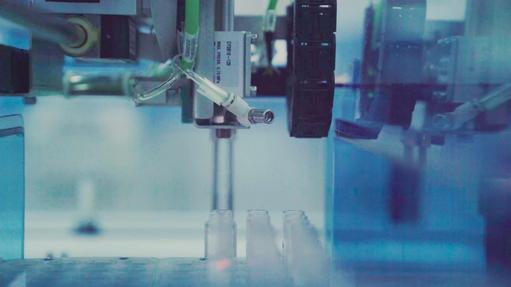- The MedTech sector has a value gap between high-growth innovators and stagnant legacy companies
- Successful transformation requires leaders with deep regulatory expertise, a strong focus on patient-centred innovation, and adaptability that goes beyond traditional leadership skills
- Achieving sustainable growth demands bold innovation and strategic agility, prioritising long-term impact over short-term gains
- The Commentary offers an actionable roadmap for CEOs to build a patient-centred culture, embrace digital transformation, and capitalise on global market opportunities
Transforming MedTech: A CEO’s Playbook
An October 2024 McKinsey Report highlights a growing divide in MedTech value creation: "The top value creators have outpaced the S&P 500, while the rest of the industry has struggled. . . . investor behaviour has revealed just how wide of a gap they see between these cohorts." The US, as the largest MedTech market, represents ~40% of global trade in the sector, with AdvaMed, the American MedTech trade association, reporting ~6,500 MedTech companies across the nation. Most of these firms are small to medium enterprises, consistently maintaining a trade surplus that exceeded $1.1bn as recently as 2017. The industry’s contributions range from ground-breaking advancements in nanotechnology, imaging, and genetic testing used by international healthcare leaders to everyday essentials like bandages, thermometers, and catheters. As emphasised by AdvaMed, innovation remains at the heart of this sector’s growth and resilience.
However, the landscape is shifting. Many MedTech firms are anchored in legacy products and slower-growth markets - what McKinsey dubs the “have-nots”. These companies face stagnating innovation pipelines, flat revenues, and declining valuations. The stakes for MedTech leaders of these enterprises are high: the need for innovative growth is urgent, and competition is fierce, both from traditional MedTech players and from emerging digital health disruptors.
Leading a successful MedTech transformation demands more than standard CEO capabilities. The regulatory, ethical, and operational needs specific to MedTech set this industry apart, making general CEO guidance inadequate. Traditional leadership advice often overlooks sector-specific nuances, such as stringent FDA compliance, prioritising patient safety, and navigating extended R&D cycles. For a new MedTech CEO aiming to lead a transformation, mastering these elements, and cultivating an adaptable, future-focused approach is crucial.
In this Commentary
This Commentary explores the challenges and essential strategies for a new CEO aiming to transform a traditional MedTech company. It examines the current industry landscape, marked by a divide between high-growth innovators – “the haves” - and stagnant companies – “the have-nots” - and outlines the specific capabilities a MedTech CEO must develop. These include visionary leadership, patient-centred innovation, and adaptability to regulatory demands. Emphasising long-term growth over short-term gains, this guide serves as a practical roadmap for driving sustainable success and redefining leadership within the MedTech sector.
Beyond General CEO Playbooks: MedTech-Specific Leadership Needs
Two widely recognised resources for new CEOs are CEO Excellence: The Six Mindsets that Distinguish the Best Leaders from the Rest (McKinsey & Company, 2022) and The New CEO: Lessons from CEOs on How to Start Well and Perform Quickly by Ty Wiggins, an advisor specialising in CEO transitions. While each offers valuable insights, neither fully addresses the unique hurdles MedTech leaders face. CEO Excellence emphasises results-oriented mindsets, customer-centric strategies, and team building, all beneficial in traditional industries. However, MedTech requires specialised strategies to manage regulatory compliance, prioritise patient safety, and navigate lengthy R&D cycles where even minor compliance lapses can jeopardise patient outcomes and regulatory standing.
Similarly, The New CEO offers insights on avoiding pitfalls and making swift impacts, yet this general approach disregards specific risks in MedTech, such as navigating complex sales channels, managing extensive clinical trials, and adhering to rigorous safety standards. Rapid transformations, encouraged in this book, may be hazardous in MedTech, where safety and regulatory compliance demand a more cautious, strategic approach.
Both books emphasise innovation as a priority, but in MedTech, this is a high-stakes, long-term investment requiring regulatory validation. Thus, frameworks built around short-term profitability and agility fall short of addressing patient-centred, outcomes-focused approaches. Leaders must appreciate that in MedTech, patient safety and long-term investments outweigh short-term gains.
The Strategic Roadmap to Transforming a ‘Have-Not’ MedTech Company
For a new MedTech CEO, guiding a company from a “have-not” status - marked by bureaucracy, slow growth, and operational challenges - toward becoming a “have” requires a dynamic blend of strategic foresight, cultural reinvigoration, and operational precision. This transformation demands reshaping the company into an agile, innovation-driven leader capable of meeting the complex demands of the modern healthcare landscape. The following outlines the essential capabilities and leadership qualities necessary to drive a successful transformation, fostering a culture that embraces adaptability, enhances performance, and positions the company for sustainable, long-term growth.
1. Visionary Leadership and Strategic Foresight
- Market Vision: Innovations have reduced hospital stays by 38% since 1980, underscoring the transformative potential of emerging technologies. In 2023 alone, FDA approvals for MedTech AI rose by 43% reaching record highs. Advanced solutions like AI, generative AI, Internet of Things (IoT), digital health, and personalised medicine are reshaping the industry. The CEO must anticipate these shifts and position the company as a leader in new care settings, from remote monitoring to AI-powered therapeutics.
- Strategic Agility: A flexible, forward-thinking strategy is crucial. The CEO must adapt to evolving patient needs, regulatory landscapes, and market trends, ensuring the company remains resilient and competitive.
- Growth Mindset: Driving market expansion and creating new revenue streams through disciplined M&A, strategic partnerships, innovative solutions and services and global initiatives will be key to sustained leadership and success. A future Commentary describes a process for disciplined M&A.
2. Innovative Thinking and R&D Transformation
- Product Innovation: Shift the R&D focus from incremental improvements to ground-breaking innovations that address significant, unmet patient needs. The CEO should champion a patient-centric, outcomes-oriented strategy that not only enhances care quality but also ensures accessibility and affordability. Emphasising bold, differentiated solutions will position the company as a leader in transformative healthcare.
- Technology Savvy: A visionary CEO must adeptly integrate cutting-edge technologies to drive innovation and maintain competitiveness. Key areas include digital health solutions like telemedicine, remote monitoring, and patient engagement platforms, alongside advancements such as AI, machine learning, robotics, and 3D printing for precision and personalised care. Expertise in IoT for real-time health monitoring, cloud computing for secure data management, and augmented and virtual reality (AR/VR) for medical training and treatment is crucial. Familiarity with regenerative medicine, genomics, biotech, and blockchain ensures readiness to navigate the evolving MedTech landscape effectively.
- Design Thinking: Embedding a design-thinking mindset throughout the organisation can transform the R&D process. This approach emphasises empathy to deeply understand patient and clinician needs, rapid prototyping to accelerate iterative development, and continuous user feedback to refine products. This framework fosters responsiveness, creativity, and alignment with real-world healthcare challenges.
3. Cultural Transformation and Diversity Leadership
- Diversity, Equity, and Inclusion (DEI) Leadership: Building a culture that embraces diverse perspectives and backgrounds is crucial to foster innovation. The CEO should champion structural changes to attract talent with fresh perspectives, particularly appealing to Gen Z’s values.
- Empathetic Leadership: Cultivating an environment of empathy and psychological safety not only strengthens team morale but also unlocks creativity, fosters trust, and enhances employee loyalty.
- Change Management Agility: Driving cultural shifts within established organisations requires dismantling silos and addressing resistance to change - particularly challenging with an average C-suite executive age of ~56 - to foster a more agile, collaborative environment.
4. Global and Patient-Centric Orientation
- International Market Insights: Familiarity with global regulatory, cultural, and market demands is invaluable, especially in high-growth regions beyond the US.
- Patient-Centric Perspective: Deeply understanding patient needs and outcomes on a global scale enables the development of tailored innovations that enhance both the quality of care and its accessibility, ensuring solutions are inclusive and impactful.
- Customer Engagement and Brand Building: Establishing a patient-centric brand that embodies the company’s dedication to innovation and exceptional care quality creates a compelling differentiator in a competitive market, fostering trust and long-term loyalty.
5. Digital Transformation and Data-Driven Decision Making
- Digital and Data Literacy: Proficiency in data analytics, AI, and digital technologies is essential for leveraging insights from patient data and operational metrics, enabling informed decision-making, and driving innovation.
- Operational Excellence in Digital Health: Knowledge of telehealth, digital diagnostics, and wearable technologies equips the CEO to drive initiatives that improve patient outcomes, optimise operational efficiency, and position the organisation at the forefront of digital health innovation.
- Digital Communication: Mastery of digital platforms to effectively engage external stakeholders - such as patients and clinicians - and connect with internal teams, particularly digital-native employees, strengthens the company’s innovative image and fosters a cohesive, forward-thinking culture.
6. Talent Acquisition and Development for the Future
- Attracting and Developing Gen Z Talent: Building an authentic employer brand that aligns with the values and priorities of younger professionals is key. Focus on promoting opportunities for growth, flexibility, and meaningful social impact to engage and retain the next generation of leaders.
- Upskilling and Reskilling for Future Readiness: Designing and executing comprehensive training initiatives ensures that employees remain competitive in an evolving landscape. Emphasis on cultivating advanced digital proficiencies and strategic capabilities is essential for driving long-term organisational success.
7. Resilience, Adaptability, and Ethical Stewardship
- Adaptive Leadership: Excelling in dynamic environments requires a leader who can anticipate and respond to market shifts with agility and foresight. The ability to embrace ambiguity and recalibrate strategies swiftly is essential for navigating the complexities of the MedTech industry.
- Ethical and Regulatory Expertise: A robust ethical foundation is indispensable, particularly in safeguarding data privacy, ensuring patient safety, and fostering trust. Navigating healthcare regulations demands a deep understanding of compliance frameworks and proactive risk management.
- Commitment to Sustainability: Embedding sustainable practices into every aspect of the business - from operations and sourcing to product innovation - demonstrates alignment with Environmental, Social, and Governance (ESG) imperatives. This approach not only addresses investor and patient priorities but also solidifies the company’s reputation as a responsible industry leader.
8. Collaborative Ecosystem Building and Strategic Partnerships
- Cross-Industry Collaboration: Historically reliant on banks to facilitate M&A, "have-not" MedTechs often overlook the transformative potential of broader partnerships. Establishing alliances with technology firms, research institutions, start-ups, and healthcare organisations can drive co-innovation, unlock new capabilities, and enhance competitiveness.
- Ecosystem Strategy: Moving beyond traditional product-focused models, a robust ecosystem strategy integrates offerings with digital health solutions and complementary services. This holistic approach enhances patient outcomes, creates synergistic value, and reinforces the company’s leadership position in an increasingly interconnected healthcare landscape.
Takeaways
Transforming a MedTech company requires more than replicating traditional CEO playbooks; it demands a multifaceted approach rooted in innovation, patient-centred priorities, and operational adaptability. As the industry faces heightened competition and pressure to innovate, a successful CEO must leverage both strategic foresight and an understanding of sector-specific challenges. Building a future-ready company goes beyond finance, regulatory compliance, and incremental improvements - it requires visionary leadership that anticipates technological advancements, cultivates a culture of inclusion, and prioritises patient outcomes over short-term gains.
A MedTech CEO must embody resilience and agility, ready to navigate the complex landscape of regulatory frameworks, extended R&D cycles, and a digitally transforming healthcare environment. By championing cultural shifts, fostering global patient-centric innovation, and building strategic partnerships, the CEO can guide the company from stagnation to sustainable growth. Ultimately, achieving transformation is about creating an organisation that not only thrives in today’s competitive market but also sets a new standard for quality care, innovation, and ethical leadership that will resonate across the healthcare ecosystem for years to come. This roadmap is not just a guide for success; it is a call to redefine what leadership means in the MedTech industry.
|




























